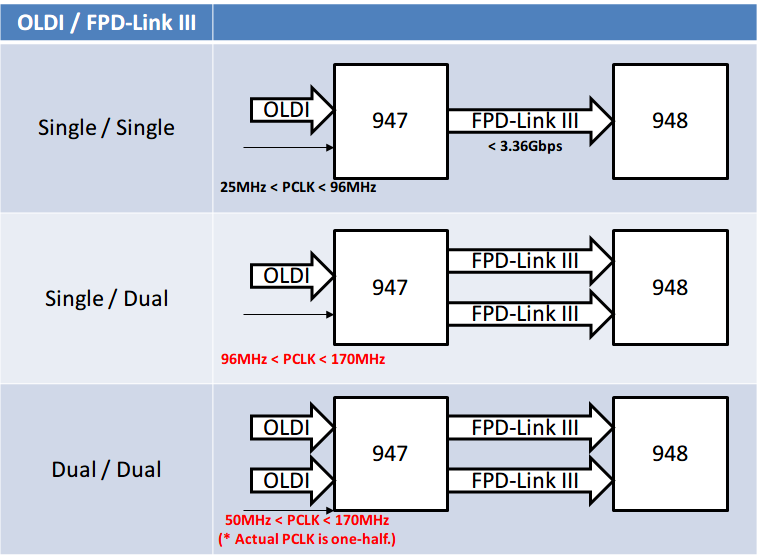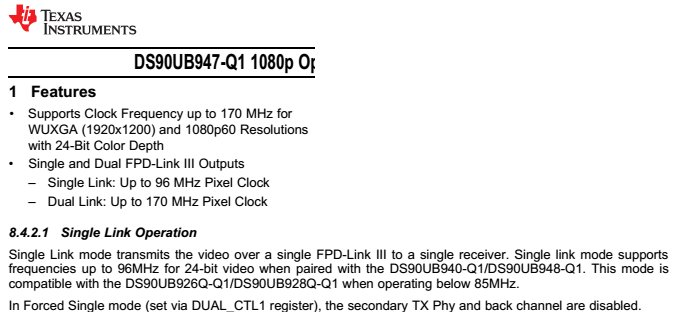Hello,
I would like some clarification on the DS90UB947 datasheet. Page 1 of the data sheet lists the FPD-link output as being able to handle "up to 96MHz pixel clock" if using a single FPD-Link link. It also lists the output as being able to handle "up to 170MHz pixel clock" if using dual FPD-Link links.
Page 6 of the datasheet lists the OpenLDI clock frequency (for a single-link openLDI interface) as 25MHz to 170MHz. It also lists the OpenLDI clock frequency (for a Dual-link openLDI interface) as 50MHz to 170MHz.
If I'm reading this right, I should be able to use a single-link OpenLDI interface up to 170MHz as the input to the DS90UB947 and transmit that over a Dual-link FPD-link interface to the DS90UB948 deserializer. Is that correct?
Thanks,
Jason






